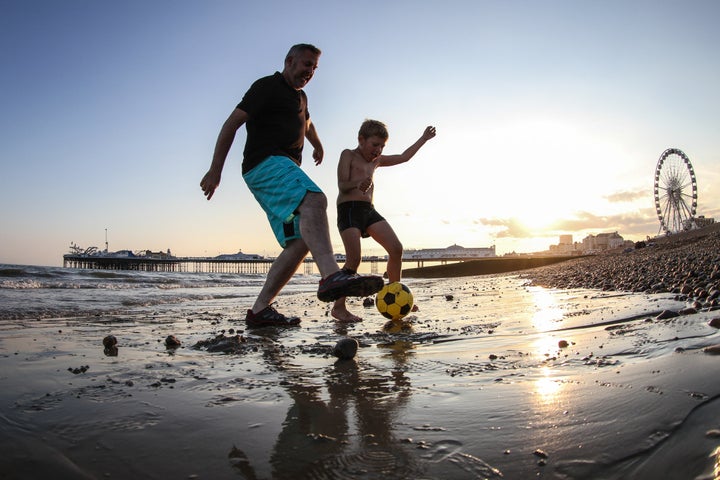Busy as your days are with demands at work and home, you’ve made time for exercise and (no surprise here) you’re feeling better in body and mind. Congratulations!

Busy as your days are with demands at work and home, you’ve made time for exercise and (no surprise here) you’re feeling better in body and mind. Congratulations!
But in the elation of committing to a new workout regime or rediscovering a sport you love, it’s essential to factor in rest days. Yes, really. It might seem counter-intuitive: exercise harder for longer and see quicker results, surely? No. Quite the opposite, especially when you’re getting back into exercise. Do too much, too fast and you risk muscle strains and the setback of a forced recuperation.
“Our bodies are designed to move little and often, not to sit at a desk for prolonged periods and then overcompensate by going to the gym in an all-or-nothing style,” explains physiotherapist Sammy Margo.
“One of the most important aspects of exercising is the time we give our bodies to properly recover. Many people don’t realise that the time you actually build muscle is in the time between exercise”.
Rest prevents injury
It’s common sense really - if you push it too hard without a break, your muscles and joints suffer from overuse and that’s when serious injuries can occur. Far better to take one day off to rest and recuperate than be forced to take weeks, even months, away from exercise. To avoid muscle strain and injuries, it’s essential to pay attention to how your body feels after a workout.
If you do suffer from muscle strains or pains after a workout, you can try medicated over-the-counter pain relief, like Voltarol Pain-eze Emulgel. Voltarol provides up to three times more effective pain relief vs non-medicated gels. Its triple effect relieves pain at source, reduces inflammation and helps speed up recovery making it ideal for gym-related pains.

Muscles strengthen with rest
This is especially true when you strength train in the gym. You are breaking down and tearing muscle fibres. Without allowing those muscle fibres time to repair, which allows for muscle growth, you are not going to see results and reap the benefits of time spent in the gym. That’s why it’s also recommended that you train different muscle groups on different days so you give each time to rest and are not overworking one group.
Keep energy levels up with regular rest days
Regular exercise is good for your health and mental wellbeing, but working out intensively every day may not be good for your energy levels, especially if you’re new to exercise or trying to get back in shape. That’s why it’s essential to take recovery days to replenish your energy stores, with rest and some gentle stretches, hydration and a nourishing diet.
Sleep aids recovery
Exercise is a great way to relieve tension built up over the working day. But make sure you don’t exercise vigorously, such as running or going to the gym, too close to bedtime. To achieve a good night’s sleep (which has health benefits including boosting your immunity, your mental wellbeing and even helping you slim), you should aim for a wind-down routine of a warm bath, some gentle stretches and relaxing your mind by reading or listening to the radio.

Keep it fun
If you adopt all all-or-nothing approach to exercise, you’re likely to become bored and disillusioned, then give up. Exercise is supposed to be fun, rather than a chore you do only for the health benefits. If you can’t conjure up enthusiasm, take a break or do something different the next day.
‘Active rest’ works
Sammy Margo recommends the benefits of ‘active rest’ - an activity that keeps you moving but at a greatly reduced intensity or duration. Instead of going all-out, run a shorter distance on a softer surface, or dedicate some time to working on your core muscles with Pilates or trying some gentle stretches with yoga to improve flexibility. All of these suggestions will make your body less prone to injuries.
Voltarol Pain-eze Emulgel is available over-the-counter; you can find it in the Healthcare aisle in stores nationwide. Voltarol Pain-eze Emulgel contains diclofenac diethylammonium for pain and inflammation. Always read the label.
Voltarol is a trademark owned by or licensed to the GSK group of companies.
Sammy Margo does not endorse any products or brands.